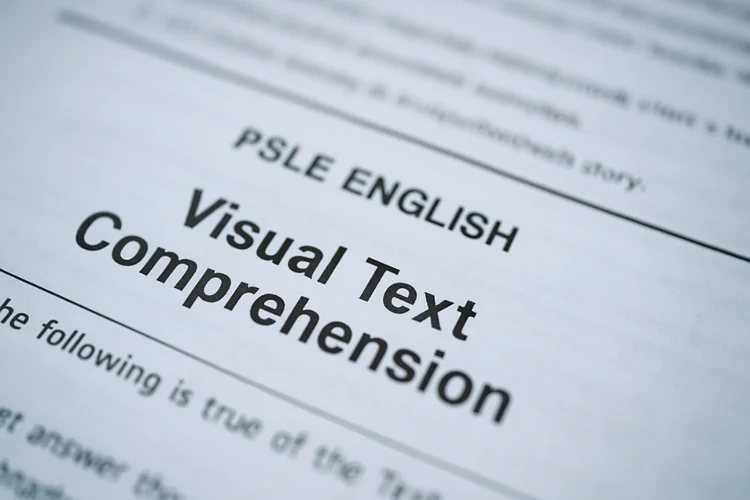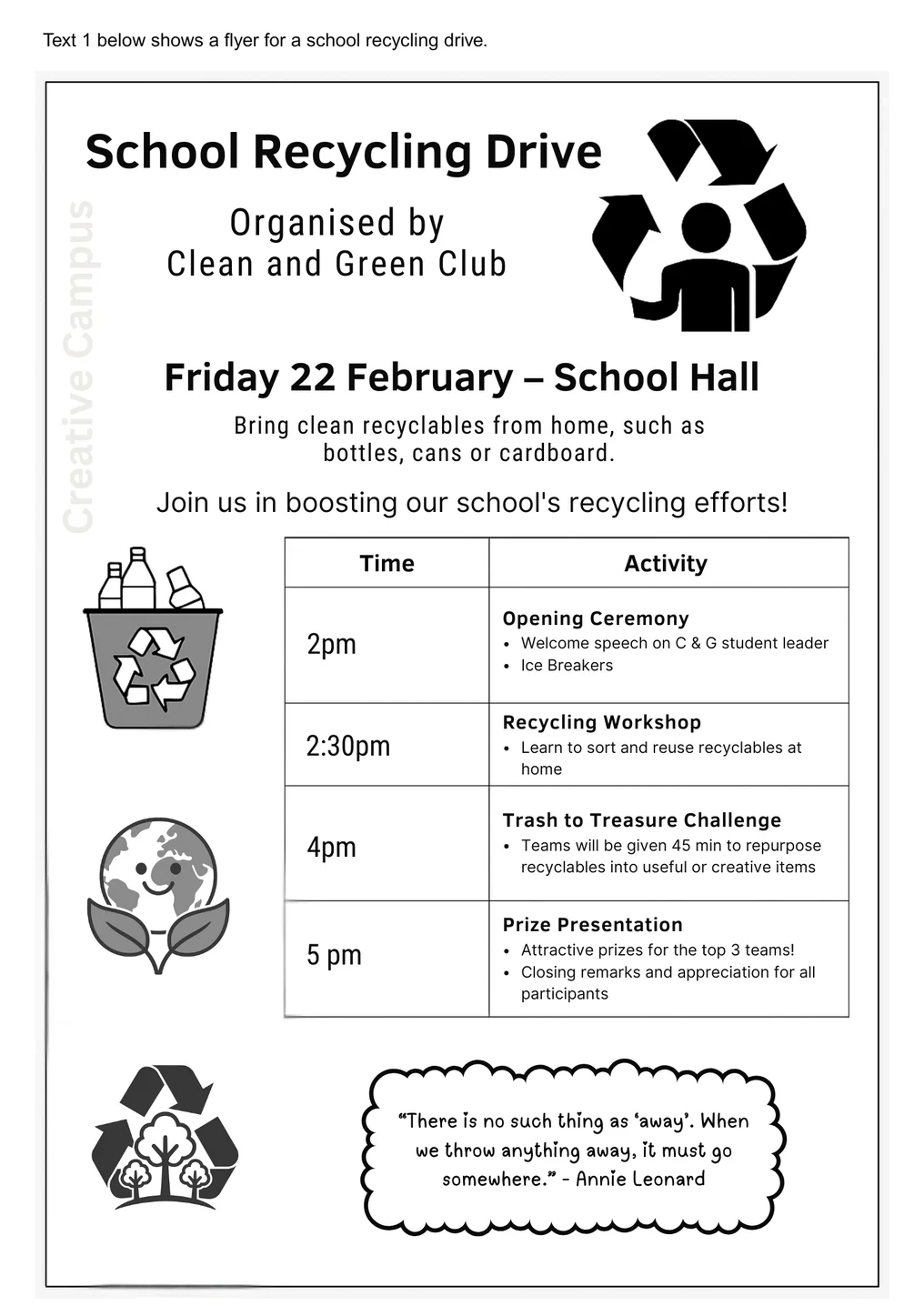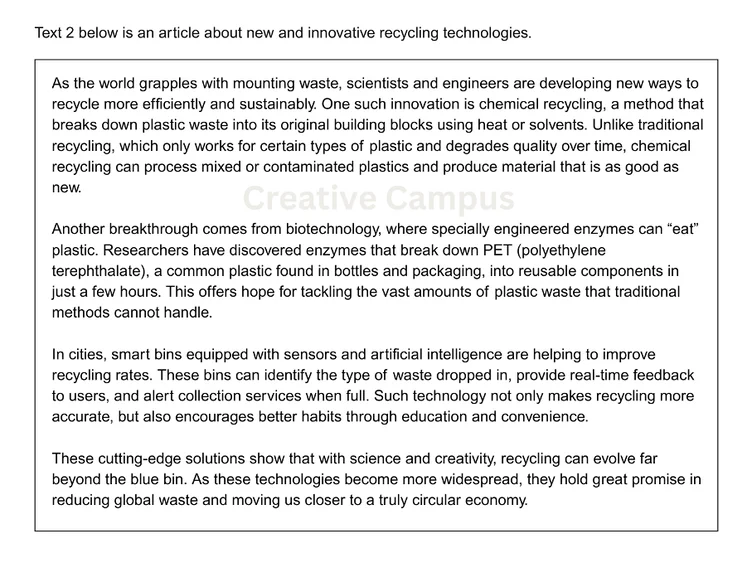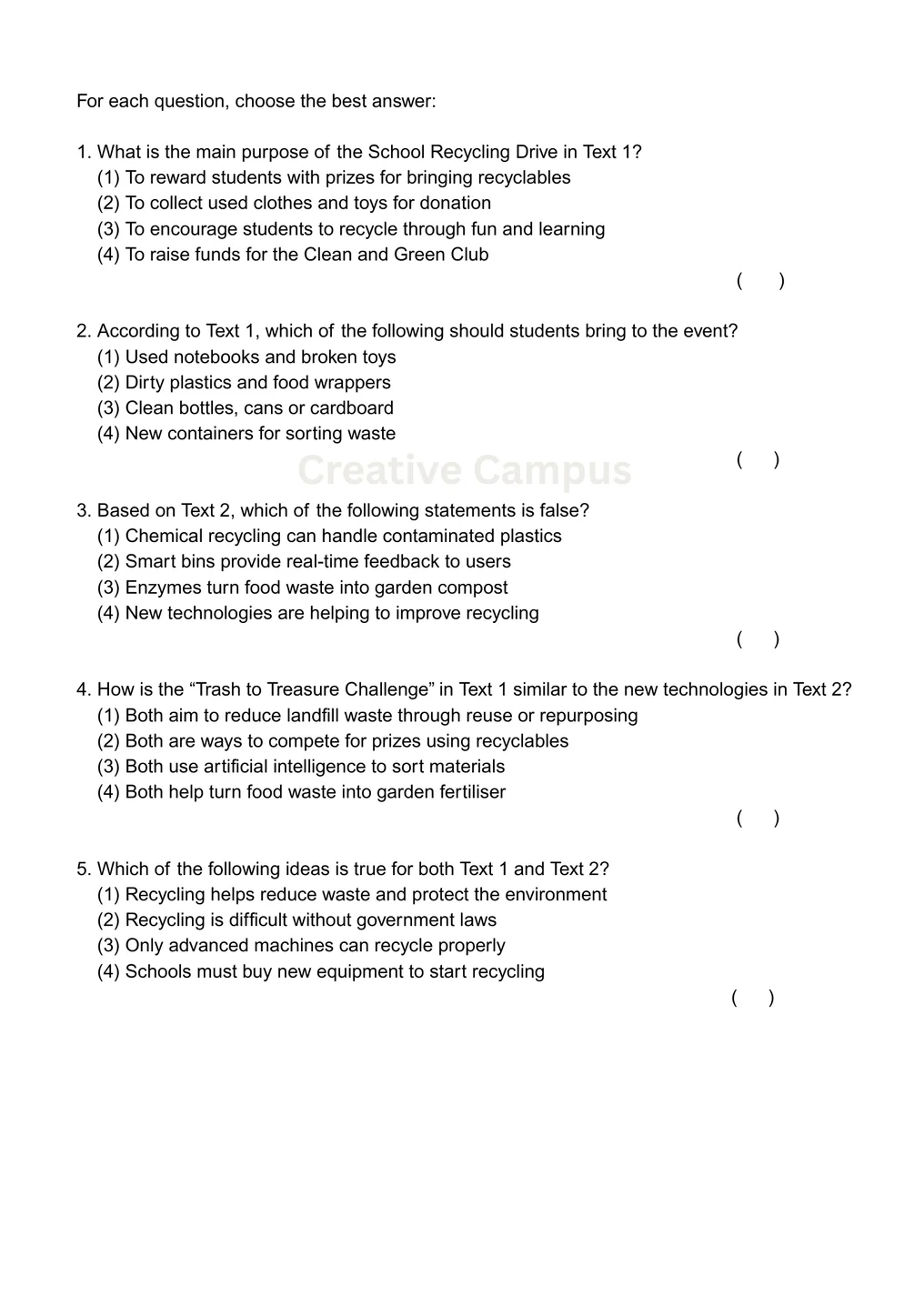What Is Visual Text Comprehension?
Visual text comprehension is about interpreting and analysing information
shown through both pictures and words. In the PSLE English paper, this
section tests how well you can figure out what the words and pictures are trying to
communicate – the message (what), audience (who), and the purpose (why).
To do well, you will need to spot the key message, understand how visual features
like layout and colour help convey meaning, and answer questions that ask you to
find facts or think more deeply about what is shown.
In this article, we will explain what the visual text comprehension section includes
and how you can tackle it confidently using 5 key strategies.

PSLE Visual Text Comprehension Format
From 2025, the updated format of visual text comprehension is a 5 mark
section found in Booklet A of Paper 2: Language Use and
Comprehension, which carries a total of 90 marks. This section
consists of 5 multiple choice questions, each worth 1 mark.
Students are presented with two texts:
- Text 1 – A visual text such as a poster, advertisement, or infographic that combines images and words.
- Text 2 – A short text relevant to the same theme, which could be an article excerpt, review, comment, or testimonial.
Questions may be based on either text or require comparison between both texts. Since all questions are multiple choice, there are no partial marks; each correct answer earns 1 full mark.
What Does Visual Text Comprehension Assess?
Visual text comprehension is important because it helps students understand the kind of
information they see in everyday life, such as advertisements, infographics, social media
posts and public notices. These are examples of texts that use both pictures and words to
share a message.
In PSLE, Primary 6 students are
tested on their ability to:
- Recognise the main message of the visual text
- Understand the purpose and tone
- Identify the intended audience
- Infer meaning from layout, font, and images
- Compare and contrast messages when multiple texts are presented
What Types of Questions Appear in Visual Text Comprehension?
Visual text comprehension questions typically fall into a few common categories:
| Question Type | What It Tests | Examples |
|---|---|---|
| Factual questions | To find specific information that is clearly shown in the text or image, such as a date, name or price. |
What time does the event start?
How much does the ticket cost? |
| Inferential questions | Ask you to figure out something that is not directly stated, using clues from the text or image to understand the hidden meaning. |
Why is the boy in the picture smiling?
According to Text 2, which word best describes the feeling of the reviewer? |
| Purpose-related questions | To test why the visual text was created, such as whether it is meant to inform, persuade, or entertain the reader. |
What is the purpose of this poster?
Look at Text 1. Why did the writer include the image in the poster? |
| Audience-related questions | To test who the message is meant for, such as children, parents, students, or even a wider public audience. |
Who is this advertisement trying to reach?
Is this poster meant for students or adults? |
| Comparative questions | Ask you to compare two visual texts by looking at their message, tone or purpose, and to spot similarities and differences. |
How is the message in Text A different from the message in Text B?
Which text is more persuasive, and why? |
Visual Text Comprehension Strategies
Use the steps below to help you analyse a visual text clearly and answer questions with confidence. Each step focuses on one key part of the text and teaches you how to think about it.

1. Examine the Headline and Tagline
What to do: Read the headline and tagline at the top of the visual
text.
Ask yourself: What is the main idea or feeling this line is trying to
express?
Look out for: Bold or catchy words, and words that make the reader feel
excited, curious, concerned or other emotions. These often highlight the main message.
2. Study the Image
What to do: Look closely at the picture, photo or illustration.
Ask yourself: What does the image show? How does it support or match the
message in the text?
Look out for: Facial expressions, body language, symbols or background
details that help show feelings like happiness, sadness, excitement or worry.
3. Observe the Layout and Colour
What to do: Pay attention to how everything is arranged on the page.
Ask yourself: What stands out first? Are certain parts bigger or more
colourful?
Look out for: Font size, boxes or images placed in special positions. These
features help guide your attention to important parts of the text.
4. Identify the Intended Audience
What to do: Think about who the text is speaking to.
Ask yourself: Is this message meant for children, teenagers, parents, a
specific group of people or the general public?
Look out for: The words used, the way the message is written, the pictures,
and any examples. Do they seem to speak to a certain person or group?
5. Understand the Purpose
What to do: Figure out why the text was created.
Ask yourself: Is it trying to inform, persuade or entertain the reader?
Look out for: Action words like “Join now”, helpful facts or instructions,
or funny stories and pictures. These can show what the text is trying to achieve.
Visual Text Comprehension Sample
English and Future Success
Research shows that strong English skills go far beyond the classroom, playing a key role in
university1 and career success2. Better English proficiency is not just about grammar and
vocabulary; it provides a crucial stepping stone for achieving life goals.
At Creative Campus, we believe that nurturing strong English skills lays the groundwork for your child’s future success. Our rigorously developed in-house curriculum not only seeks to enhance language proficiency but also fosters critical thinking, creativity, and confidence. Through engaging lessons and dedicated guidance, we equip students with the tools they need to excel academically and beyond. Ready to unlock your child’s full potential? Contact us today to book a trial class and see how we can make a difference!

About Mrs Elizabeth Yeo

CHIEF OPERATING OFFICER
CHIEF FINANCIAL OFFICER
DIRECTOR OF PROGRAMME (PRIMARY LEVELS)
Frequently Asked Questions (FAQ)
To improve at visual text comprehension, practise identifying the main message and understanding how images and words work together across two related texts. Read a variety of posters, ads and short articles, and try past PSLE-style questions that involve comparison. Learn to spot tone, purpose and intended audience in each text, and pay close attention to how they relate to each other.
A visual text feature is something like bold headings, large fonts, images or layout that helps important information stand out. These features guide your attention and work with the text to highlight key messages in both visual and written formats. When two texts are presented, comparing these features can also help show differences in tone or purpose.
To interpret visual texts well, look at how both texts use images and words to convey meaning. Begin by identifying the key message, tone and intended audience in each text. Then, compare how the visuals, layout and wording support those messages. Use clues from both texts to understand how they relate or differ.
To answer visual text questions, read both the visual text (Text 1) and the short written text (Text 2) carefully. Look for clues in the images, layout and language, and think about how the two texts are related. Eliminate options that do not match either text or show incorrect comparisons. Since the questions are multiple choice, accuracy and careful comparison are key.
Yes, visual texts often include words such as headlines, taglines or short descriptions that help explain the message. In the PSLE, these words appear alongside images and are often compared with a second text that is purely written, to test how well you understand and relate the two.
The elements of a visual text include the headline, images, layout, font size, colours, and written content such as slogans or short messages. When both a visual and a written text are given, it’s important to compare these elements to understand how each one presents its message, tone and purpose.



